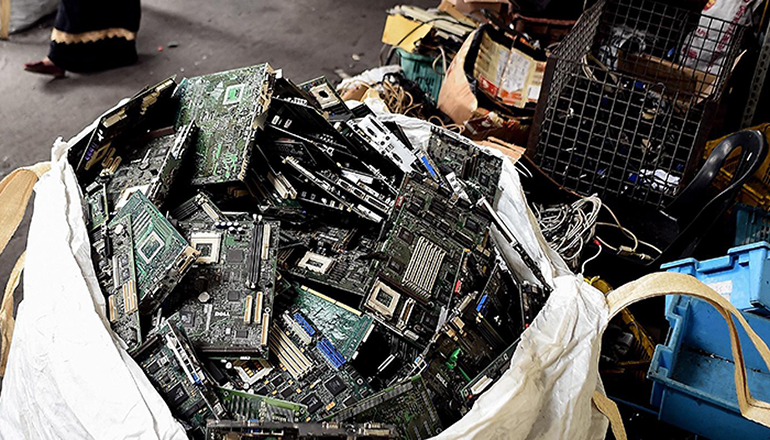Electronic waste, or e-waste, is one of the fastest-growing waste streams globally, with an estimated 53.6 million metric tons generated in 2019 alone. This waste includes discarded electronics such as smartphones, laptops, and televisions, which can contain hazardous materials that pose environmental and health risks if not properly managed. Fortunately, there have been several innovations in e-waste management technology in recent years, and the future looks promising with new trends emerging. In this article, we will explore these innovations and trends in electronics recycling technology.
Innovations in E-Waste Management Technology
- Separation Techniques The first step in e-waste recycling is to separate the various materials, such as plastic, glass, metal, and precious metals, from each other. Advanced separation techniques, such as chemical leaching, mechanical shredding, and magnetic separation, have been developed to recover materials more efficiently and reduce waste.
- Robotics Robotic systems are becoming increasingly popular in e-waste recycling, as they can sort and separate different types of materials accurately and quickly. Robotics also reduce the risk of human exposure to hazardous materials and improve the overall efficiency of the recycling process.
- Chemical Recycling Chemical recycling is a process that breaks down the materials in e-waste to their basic building blocks, which can then be used to make new products. This process has the potential to recover a greater range of materials and reduce the amount of waste produced during recycling.
- 3D Printing 3D printing has the potential to revolutionize e-waste recycling by allowing for the creation of new products from recycled materials. This process reduces the need for new raw materials and can significantly reduce the environmental impact of manufacturing.
Future Trends in E-Waste Recycling Technology
- Internet of Things (IoT) Enabled Recycling IoT-enabled recycling involves the use of sensors and other smart technologies to collect and analyze data from e-waste. This technology can help to optimize the recycling process, reduce waste, and improve efficiency.
- Artificial Intelligence (AI) in E-Waste Recycling AI technology can be used to analyze and process data from e-waste recycling, making the process more efficient and cost-effective. AI can also help to identify and recover valuable materials from e-waste that might otherwise be overlooked.
- Blockchain Technology Blockchain technology can be used to track the movement of e-waste through the recycling process, ensuring that it is properly managed and disposed of. This technology can also help to reduce the risk of e-waste being illegally exported or disposed of inappropriately.
- Biodegradable Electronics Biodegradable electronics are electronic devices that are designed to decompose naturally, reducing the amount of e-waste produced. This technology is still in the early stages of development but has the potential to significantly reduce the environmental impact of electronic devices.
Benefits of Innovations and Future Trends in E-Waste Management
The innovations and future trends in e-waste management technology offer several benefits, including:
- Reduced Environmental Impact Efficient e-waste management technology can reduce the environmental impact of e-waste by reducing the amount of waste produced and recovering valuable resources.
- Economic Benefits Recycling e-waste can create new jobs and stimulate economic growth. This technology can also reduce the cost of producing new products by recovering valuable materials from e-waste.
- Improved Efficiency Innovative e-waste management technology can improve the efficiency of the recycling process, reducing the time and resources required to recycle e-waste.
- Reduced Health Risks Advanced e-waste management technology can reduce the risk of human exposure to hazardous materials, protecting the health and safety of workers in the recycling industry.
